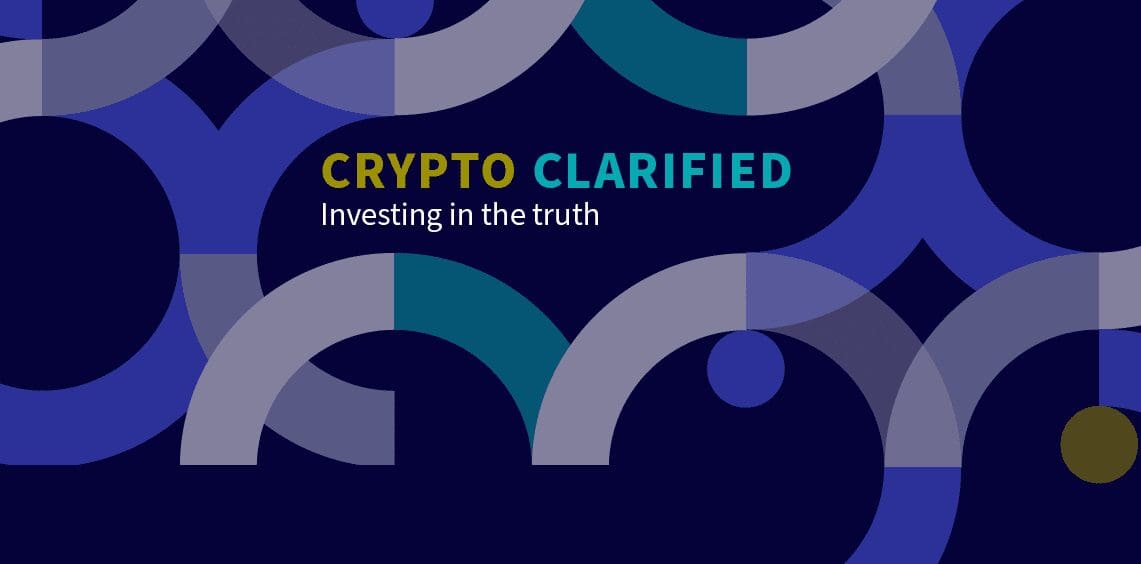Now is the time to re-engineer consumer financial services, one piece at a time.
The infrastructure on which the global financial system runs is changing. Such step or phase changes happen from time to time across industries. Many can remember, for example, what the internet did to journalism, shopping, and entertainment. Now a set of innovations—including the internet, smartphones, exchange-traded funds, robo-advisors, blockchain and smart contracts—could lead to a major evolution in the way that financial services are provided. If executed successfully, this evolution will (ideally) provide more choice, transparency and inclusivity to people who use financial services.
As a backdrop, the way in which the establishment in financial services has responded to the digitization of consumer services has been a failure, to put it mildly. Their inability to innovate stems from the inflexibility of the infrastructure on which they’ve built their platforms. This contrasts with almost every other industry we interact with daily. People (most of whom don’t remember a time before the internet) expect to be able to conduct their affairs using the most convenient, cost-effective, and fastest means possible (which is in their pocket). Add to this the constrained nature of national systems and it is not surprising that products and services have not reached internet scale, limiting their availability to those that need them and/or leading to rent seeking (@Western Union).
There are some bright spots. The past decade has seen new expertise in designing and customizing mobile-first experiences, with financial services start-ups attempting to layer these on top of existing infrastructure. At the same time there has been an intersection of financial services experts with technical experts who understand the value proposition of standardization and open systems, and who embrace data and customization. But the aggregate systems remain both fragmented and closed off, so the experience still falls short of what people have grown to expect.
The next phase of evolution will be built by those who see the potential of everything that exists today and can bring it together in a way that is greater than the sum of its parts. To do this will require more than just utopian innovation buzzwords. We have available to us a cluster of technologies, expertise, unmet demand, and an approach to financial services that, if combined correctly, could drive an evolutionary financial system transformation. This would mean solving real problems in a pragmatic and sustainable way—evolution rather than revolution.
Below are some of the ways in which I think that financial services need to change—all innovations and technologies that have now converged—and how a blockchain-native financial business can provide more choice, transparency, and inclusivity to people. In subsequent posts I will go into more detail on these and other pieces that we are assembling with WisdomTree Prime.
The Internet
The ability to quickly share information and data is crucial to improving the efficiency of almost anything. Information asymmetry is also one of the key reasons why rent-seeking persists in a system. The infrastructure developments in this space can’t be ignored either; over the last 30 years we have laid cables, put up towers and launched satellites that now connect almost every person on the planet.
This highly connected world has changed a great many things and forced many business models to evolve; retail, media, and gaming to name a few. However, financial services remain mostly unaltered. Of course, you now have websites that people use in lieu of branches and payments are made online or with your phone, but these interactions are fundamentally the same as they were—you provide a bank/broker/advisor with some information, and they update their system. The medium through which you provide the information has changed but the building blocks that create the system you interact with are the same. Of course, this has had benefits. I would much rather do something online than in a branch. But why hasn’t there been any real innovation in the underlying system or business model? I believe that this lack of evolution is why digital interactions with financial services companies lag other sectors and now falls noticeably short of what is demanded by consumers in 2022.
Smartphones
The usability of the smartphone user interface (UI) was a huge leap forward and it has only been refined since Apple launched the first iPhone in 2007. Watch how a child intuitively knows how to use a tablet or smartphone and you’ll know what I mean. This innovation wasn’t only about the hardware though. It was also about the software that followed with the birth of the mobile app. Initially, businesses simply created mobile-friendly versions of existing client interactions. But before too long, people were creating mobile-first experiences that went beyond what was possible in other mediums, aided by the touch interface as well as other features of modern phones: camera, GPS, biometrics, gyro sensors, NFC, etc. This has now become a specialist field with entire business models being redesigned and delivered entirely within a mobile application. Even Facebook was late to the party for mobile-first experiences—and financial services basically turned up at last call.
We’ve seen people attempting to bring this approach to financial services, usually to solve a specific problem. Neobanks focused on user experience (UX) or foreign exchange (e.g., Wise) or data sharing (e.g., Plaid) or bank-to-bank transfers (e.g., Venmo). While these do represent a vast improvement in the usability of the equivalent bank-offered services, they are ultimately constrained by the financial services foundations on which they are built. For example, neo-banks rent their underlying tech stacks from existing retail savings banks. All they really did was layer on a slicker interface. This means that the fundamentals of the consumer experience can’t be altered. How can we expect a mobile first experience to take full advantage of the possibilities offered by the smartphone if the underlying architecture was built 30 years before these features were conceived?
Exchange-traded funds
ETFs (Exchange Traded Funds) were THE financial innovation of the last two decades. They allowed people to buy and sell what were essentially mutual funds (the financial innovation of the two decades before that) on equity stock exchanges. What was revelatory about ETFs wasn’t the economic exposures themselves but the democratization of access, which completely changed the way in which the industry reacted to clients’ wants and needs. A lot of people have written about why ETFs have been so successful over the last two decades, but the real power of ETFs was that once someone was set up to buy one ETF (all you needed was a brokerage account) you were set up to buy every other ETF that existed or would exist. This created a dynamic that had been historically absent from financial services: the client needs became the prime driver of decision making.
Prior to this, fund providers poured money into owning the distribution channels, controlling the information flow, constraining choice, and creating pseudo-oligopolies. With the client only able to buy from one provider (moving was EXTREMELY cumbersome) the providers faced almost no pressure to evolve their offering or lower costs. As soon as ETFs moved the distribution channel into a relatively open ecosystem, this changed. Low fees, transparency and innovative offerings became the name of the game—all the things clients wanted. In turn, client engagement went up, it became possible for innovations to compete on their merits and growth rates went through the roof. This is how a subset of financial services professionals came to understand the power of open systems. The other lesson to be learned from ETFs is the power of standardization and the expertise of wrapping exposures that was developed. By allowing interaction with exposures to multiple asset classes (equities, FI, commodities, alternatives) via a common interface (brokerage account) the products become a force multiplier for transparency and efficiency across the financial services ecosystem. The parallels to tokenization are relatively apparent. An ETF is a convenient wrapper for asset class exposure. Tokenization is a convenient, more technologically evolved wrapper for asset class exposure.
Robo-advisors
Robo-advisors are the first generation of automation of consumer finance with an eye to increase efficiency and improve scalability. They are taking an element of financial advice, the asset allocation piece, and attempting to automate it. This has become increasingly commoditized over the years as best practice moved from advisors helping people pick stocks to putting them into well diversified portfolios. This resulted in clients being categorized based on their stage of life, and therefore how much risk they wanted, then put in an off-the-shelf portfolio. By automating and taking a data-driven approach to this, a robo-advisor should be able to achieve more scale and therefore offer more flexibility and more customization than a traditional advisor.
This model has been successful to some degree. However, the reasons aren’t hugely compelling. This model beat out on savings versus traditional options, pulling in those that wouldn’t have sufficient assets to speak with an advisor, rather than thriving on the unique customer experience as a true alternative. I believe this is because, in its current form, this model further silos the financial system. For those getting other services from advisors (tax planning, for example) it complicates their life. If you already have a broker, well, this is just a different approach. So, this version appeals to some that are truly unhappy but mostly services those who were previously excluded owing to insufficient assets. It ignores all the people who were unserved in the past. Taking an approach that attempts to pull in the un- or under-served, using a back-end interconnected system that permits lower cost and greater reach, could be transformative.
Blockchain & Smart Contracts
Throughout the piece I have referred to elements of financial services that fall short in a digital age. This isn’t (entirely) the fault of the firms operating in the space because the systems used for storing a record of value or money were not designed to be compatible with the internet. I’ll avoid geeking out too much more about the technicalities, but the internet is based on sharing copies of things. If you send a digital photo to someone, they get a copy of the code that makes up that photo, not the original and not something that is unique. This is fine for most things (photos, spreadsheets, videos, etc.) but absolutely does not work for money—everything breaks if I send you $100 but also keep the $100. This is called the double spend problem and it’s fundamentally what blockchain solved for. Put another way, a blockchain allows a network to store a record of who owns what without the need for a trusted intermediary (e.g., a bank) to keep the record. It is tamper-proof and accessible in a digitally native way.
This technology was first introduced by Bitcoin, which is very focused on the straightforward representation of unique ownership and was quickly adopted to cover other use cases. The creators of Ethereum realized that you could use the same techniques to not just store a representation of simple value, but any information in this way—if coupled with a ‘Turing Complete’ programming language (i.e., it can process logic the way a computer does). Compiling this programming language and storing and running it on a blockchain is what’s known as a ‘smart contract’ and allows for highly flexible automation of money movement as well as development of more complicated decentralized applications or organizations.
Blockchain is the final piece of the technology stack that has come together to potentially drive real change in the way the consumer financial services system works. At its core, blockchain is just a new way to store a database: in a decentralized way. But what I see is the possibility of a system that has far less reliance on financial intermediaries and could allow consumers greater ownership, transparency and ultimately control over their financial lives. Smart contracts are the tools through which we can automate and scale processes built around blockchain representations of value (i.e., tokens). This in turn could allow the creation of services that are native to the internet, accessible to everyone that is connected to the internet. Ones where the scale and efficiency mean that those with lower socio-economic status aren’t excluded. Ones where the inefficiencies of national systems trying to interoperate disappear and the space for rent-seeking shrinks.
What’s needed now is to take the technology, evolve the usage and establish business models that can scale into this vision. This isn’t to say whatever comes next will be perfect—it obviously won’t, but I don’t need perfect. I’d settle for an order of magnitude better. Especially if it is one where the clients’ needs became the prime driver of decision making.
DeFi
Here is the Wikipedia definition of ‘decentralized finance’ (DeFi):
“Decentralized finance offers financial instruments without relying on intermediaries such as brokerages, exchanges, or banks. Instead, it uses smart contracts on a blockchain.”
It’s pretty good but what we’ve seen emerge from the space is so much more than simply replicating existing functions in a blockchain environment. When building a solution to a given problem, say connecting buyers and sellers (and exchanges), the solution you develop will be dictated by the tools at your disposal and the constraints of anything you’re building on. For those building DeFi applications, they have a completely new set of tools and a new system to build on. This has led to lots of novel ideas being deployed. I’m not going to talk about specific projects here but it’s hard to understate the amount and pace of innovation that is occurring in the space.
To date, ‘DeFi’ has been built in a way that doesn’t always mesh with existing regulatory frameworks and systems. The future evolution of financial services—which needs to deliver a safe, reliable, and usable experience to customers—will need to be done in a responsible, regulated way.
That’s not to say that everything being built here is a winner—far from it. My guess is that 90% or more of what is being built today won’t exist in 20 years’ time. That isn’t a problem or worry in itself. This process of creative innovation is normal. The majority of the techniques/approaches being developed by independent organizations or individuals (there isn’t a bank in sight) are being done as open-source projects, so anyone can just pick up the code and evolve it. An environment has emerged in a corner of the internet that is turning out next-generation financial infrastructure, simply because those involved think they can make something better.
By recognizing that the blockchain as a catalyst technology and DeFi as a driver of innovation, coupled with changes in the ways that people use and expect (financial) services to be delivered, we can start to see a direction of travel that leads to the bold, high-level statements I started this piece with; a moment in time that will be looked back on as the start of a new phase of evolutionary change.







